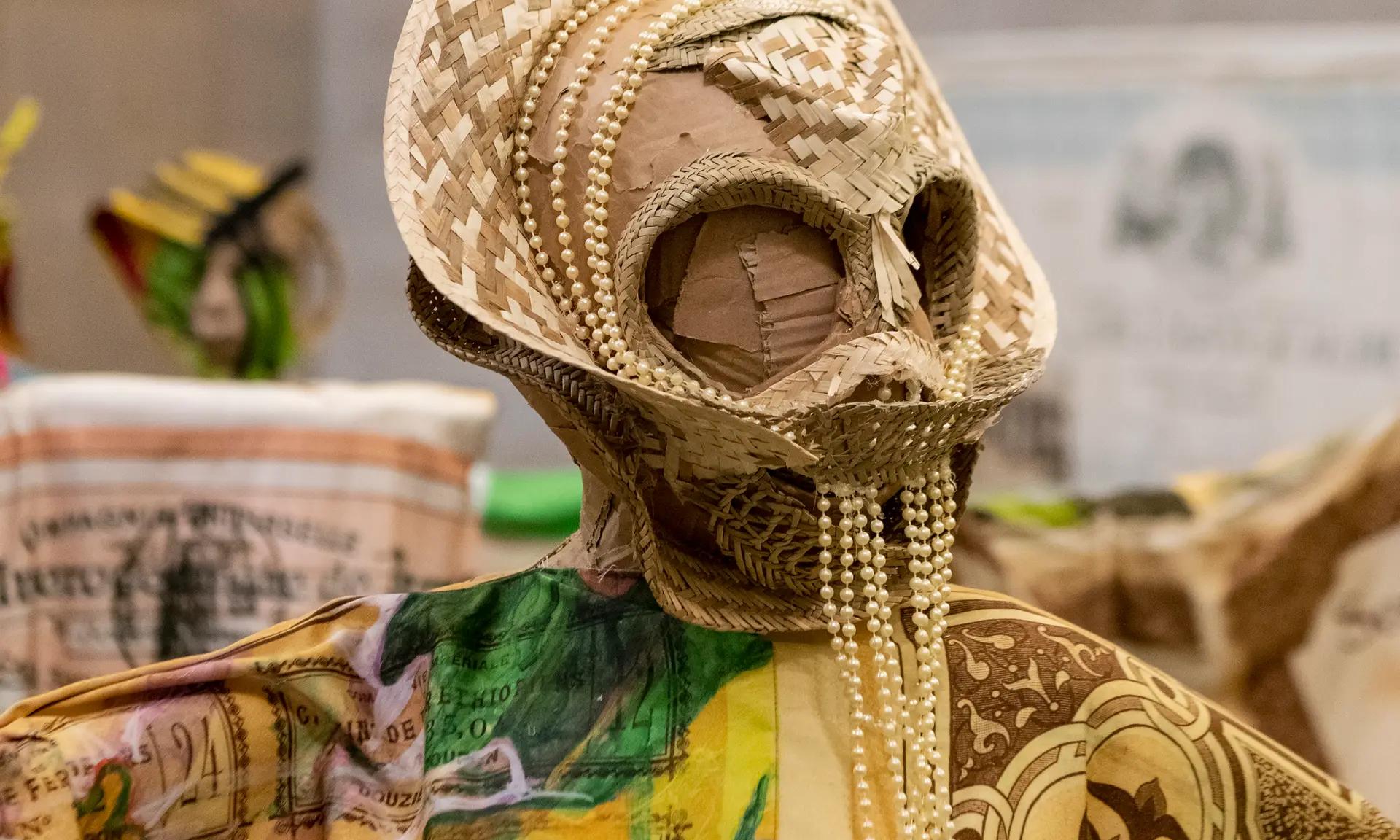Hew Locke's The Procession (2021) installed at Tate Britain Photo: Joe Humphreys
Hew Locke’s huge carnivalesque art installation, The Procession (2021) has moved from Tate Britain to the Baltic Centre for Contemporary Art in the Northeast of England in what I hope could be a new model for putting on exhibitions in cash-strapped public galleries.
The Procession was commissioned by London's Tate Britain as a site-specific work for its 300ft-long Duveen galleries and opened to the public in March 2022.The Procession is made up of 140 human-size figures in vibrantly coloured costumes and headdresses, some on horseback, some carrying weapons or flags. It is highly accessible, family-friendly and is popular with audiences. The fact that the work draws on the dark legacy of slavery and colonialism makes it a very useful educational tool for parents and schools while also being joyful to behold. But after its stint at Tate Britain, the work was destined for storage.
A chance encounter between Baltic’s director, Sarah Munro and Paul Hedge, the co-founder of London's Hales Gallery, at Frieze London art fair in October last year changed all that. Munro congratulated Hedge, whose gallery represents Locke, on the success of The Procession at Tate and enquired where it was going next. “Storage,” he replied regretfully. The artist had always hoped the work would tour but no one had picked it up. Munro jumped at the opportunity. “We’ll take it,” she said adding that Baltic would pay for transport and installation costs. Just over three months later, in mid-February, The Procession opened in the Northeast and the visitors have been pouring in ever since.
Hew Locke's Procession installed at Baltic Photo: John McKenzie; © Baltic 2023
That chance encounter at Frieze London was a moment of serendipity. At Baltic we had just taken the very difficult decision to cancel a show scheduled for February because of costs. Baltic has no permanent collection so it can’t whip a few artworks out of storage. We were facing thousands of square metres of empty gallery space.
Crippling gas bills, inflation and rising staff costs means public galleries like ours have very little money left for programming. It is also much more difficult to get sponsorship or raise money from high net individuals when based outside of London.
Baltic opened just over 20 years ago in a converted flour mill on the banks of the River Tyne which divides Newcastle from Gateshead. It is situated in one of the most deprived areas of the UK where one in three children are growing up in poverty and, in my opinion, it is one of Britain’s most successful examples of urban regeneration. According to Baltic's internal research, it gets half a million visitors a year, many of them from lower socio-economic backgrounds and one third are under the age of 25.
It is funded by a combination of government subsidy and commercial income from catering and retail. But the subsidy has remained static and our visitors are spending less money. Because Gateshead is an area of high deprivation, we cannot charge for entry or exhibitions. Post-pandemic we even turned our commercially run cafe into a free space called the Front Room, serving complementary teas and coffees donated by a local business. Much of the money we used to spend on shows now goes into paying our gigantic gas bill.
For all these reasons the partnership between Hales Gallery, Baltic and Hew Locke is a win-win all round. Hew Locke is delighted because his work will be seen by a completely different audience, and it has saved him a huge amount of money in storage costs given the size of the installation. It's also a win for audiences in the Northeast and Scotland (Edinburgh is a 90 minute train ride away).
Baltic is not the only public gallery trying to balance an ambitious programme with keeping the lights on. There is a real danger of creativity being stifled in this current climate, which is why the Art Fund has awarded almost £2m to galleries (including Baltic) to help stage "bold experimental projects".
If we are to survive, we must build new networks between public and commercial galleries. Most museums and galleries plan their programmes years in advance. Moving Hew Locke’s Procession from Tate to Baltic was achieved in the just over three months: proof that if public galleries are prepared to be more fleet of foot, they can overcome some of the hurdles currently facing them.
• Kirsty Lang is the chair of trustees at Baltic
• Hew Locke: The Procession, Baltic Centre for Contemporary Art, Gateshead, until 11 June

